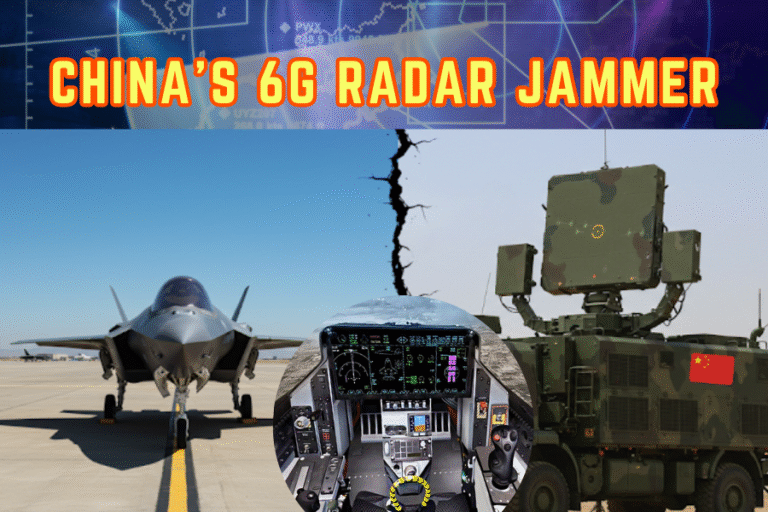(By Khalid Masood)
Warfare, through the ages, has been sculpted by technologies that redefine its boundaries. Medieval cavalry yielded to the English longbow’s lethal precision; impregnable castles crumbled under cannon fire; and Germany’s Blitzkrieg shattered the plodding trench warfare of World War I. Each shift was not merely tactical but existential, altering the calculus of power. Today, we stand at the threshold of another such revolution: AI-Centric Cognitive Warfare, where victory hinges not on physical destruction but on paralyzing an adversary’s ability to think, decide, and act. The May 2025 Indo-Pak short or limited war, sparked by India’s ill-fated Operation Sindoor, offers a stark case study of this paradigm, with Pakistan’s AI-driven counterstrikes exposing New Delhi’s strategic obsolescence. This article explores how artificial intelligence is reshaping warfare, its risks, and why nations like Pakistan must master this invisible battleground to secure their sovereignty.
1. The 2025 War: India’s Miscalculation
On April 19, 2025, an attack in Pahalgam, Kashmir, killed 32 tourists, igniting a perilous crisis (The Hindu, Apr 20, 2025). India, blaming a Lashkar-e-Taiba-linked group, unleashed a media blitz, filed FIRs, and launched raids across J&K (Times of India, Apr 25, 2025). Diplomacy faltered amid cross-border shelling, culminating in Operation Sindoor on May 8–10, 2025—missile strikes targeting alleged militant camps in Pakistan and Azad Jammu and Kashmir (AFP). India’s Rafale jets and missiles, backed by $5.4B S-400 systems, aimed for a swift victory (India Today, May 2025).
Yet, the narrative unraveled. Pakistan’s response, leveraging AI-centric cognitive warfare, turned India’s aggression into a debacle. Similar to 2019’s Operation Swift Retort, where Pakistan downed an SU-30 and a MiG-21 of Indian Air Force (IAF) and showcased electronic warfare prowess (Al Jazeera, Feb 27, 2019), 2025 saw a multi-domain counteroffensive. Pakistan’s J-10Cs, JF-17s, Shahpar-II drones, and BeiDou-guided Ra’ad-II missiles struck Indian airbases at Adampur and Sirsa, neutralizing 7 IAF jets, including 5 Rafales, Dozens of Israeli Heron drones, S400 AD radar sites and 36 other places/IAF bases (Le Monde, May 8, 2025). This victory, executed in days, was not won by brute force but by disrupting India’s command, control, and cognition—a masterclass in the emerging art of cognitive warfare.
2. Pakistan’s Post-2019 Leap: Building a Cognitive Arsenal
The 2019 Balakot clash exposed India’s electronic warfare (EW) deficiencies, prompting Pakistan to reimagine warfare beyond kinetic domains. Recognizing that future conflicts would span air, cyber, space, and the electromagnetic spectrum, the Pakistan Air Force (PAF) launched a transformative modernization drive (Dawn, Mar 2020). The establishment of PAF Cyber Command and PAF Space Command in Islamabad centralized multi-domain operations (The Express Tribune, Jun 2021). The National Aerospace Science & Technology Park (NASTP), inaugurated in 2022, catalyzed indigenous R&D in AI, aerospace, and information systems (Pakistan Today, Aug 2023).
Unlike India, where bureaucratic inertia and civil-military disconnects stall innovation (The Hindu, May 2025), Pakistan’s armed forces directly steer weapons development. Collaborations with China, including BeiDou’s 10 cm-accurate navigation, integrated JF-17s, Shahpar-II drones, and HQ-9 AD systems into a networked combat ecosystem (Nature, May 2025). By 2025, Pakistan’s AI-driven platforms fused real-time data from radars, satellites, and cyber units, enabling seamless decision-making (Global Village Space, Mar 2022). This architecture, blending EW, cyber strikes, and AI analytics, laid the foundation for cognitive warfare, turning Pakistan into a formidable asymmetric power.
3. Defining AI-Centric Cognitive Warfare
At its essence, AI-centric cognitive warfare redefines victory by targeting the adversary’s mind and operational cohesion, not just their matériel. Unlike traditional warfare’s focus on attrition, this paradigm seeks to disrupt, disorient, and dominate through information and perception control. Artificial intelligence serves as the linchpin, performing four critical functions:
- Real-Time Data Processing: AI scans vast battlefield data—radar feeds, satellite imagery, and cyber intercepts—identifying patterns in milliseconds (IEEE Spectrum, Jan 2025).
- Vulnerability Mapping: Algorithms pinpoint weaknesses in enemy defences, from radar gaps to command bottlenecks (CSIS, Feb 2025).
- Predictive Analytics: AI anticipates adversary moves, enabling preemptive strikes, as Pakistan’s 2025 counteroffensive demonstrated (Clashreport, May 9, 2025).
- Automated Decision Loops: AI accelerates OODA (Observe, Orient, Decide, Act) cycles beyond human capacity, orchestrating drones, missiles, and cyber operations (Nature, May 2025).
This warfare fractures confidence, sows confusion, and paralyzes command structures. Pakistan’s 2025 use of AI-driven EW jammed India’s S-400 radars, while cyber strikes disrupted IAF communications, rendering Delhi’s response incoherent (India Today, May 28, 2025). The goal: not to destroy but to render the enemy operationally blind, achieving strategic ends with minimal kinetic cost.
4. The Mechanics of Cognitive Dominance
AI-centric systems operate across domains, creating a symphony of disruption. In 2025, Pakistan’s Shahpar-II drones, guided by BeiDou’s multiband signals, conducted ISR and precision strikes, evading India’s NavIC-dependent defenses (Al Jazeera, May 7, 2025). AI coordinated drone swarms with Ra’ad-II missiles, targeting Indian C4ISR nodes with 10 cm accuracy (Thesvi.org, Aug 2020). Cyber operations, launched via PAF Cyber Command, infiltrated Indian networks, leaking false orders and sowing distrust (*@Blaxk__Bird, Jun 2, 2025).
Psychological operations amplified the chaos. AI-crafted disinformation, disseminated through social media, eroded Indian public support. Secure data links, leveraging BeiDou’s quantum key distribution (QKD), ensured Pakistan’s command remained unbreached (Xinhua, May 2025). This fusion of AI, EW, cyber, and psyops—executed in hours—neutralized India’s larger force, proving cognitive warfare’s asymmetric edge.
5. Why AI-Centric Warfare Is a Game-Changer
Cognitive warfare redefines conflict dynamics, offering decisive advantages:
- Speed and Precision: AI’s millisecond decisions enable wars to end in days, as Pakistan’s 2025 counter strike showed (Le Monde, May 8, 2025).
- Asymmetry: Smaller forces, like Pakistan’s, outmaneuver larger adversaries with superior AI and cyber tools, leveling power disparities (CSIS, Feb 2025).
- Cost-Effectiveness: Shahpar-II drones ($10,000 each) and cyber strikes cost fractions of India’s $288M Rafales, achieving disproportionate impact (Global Village Space, Mar 2022).
- Non-Kinetic Outcomes: By paralyzing decision-making, cognitive warfare achieves strategic goals without prolonged destruction, minimizing escalation (Foreign Affairs, Mar 2025).
Global examples underscore this shift. Ukraine’s 2025 drone strikes on Russian air bases, using $500 FPV drones to destroy $7B in bombers, relied on AI for targeting (Kyiv Independent, Jun 2, 2025). Israel’s AI-driven Iron Dome enhancements intercepted 95% of Hamas rockets in 2024 (The Jerusalem Post, Dec 2024). Pakistan’s 2025 success, integrating BeiDou and AI, places it among these pioneers.
6. Risks and Ethical Quandaries
The promise of cognitive warfare is tempered by profound risks. AI’s speed outpaces human oversight, raising escalation dangers. In 2025, Pakistan’s rapid counterstrikes risked miscalculation, narrowly avoided by diplomatic restraint (The Guardian, May 15, 2025). Misjudged red lines—e.g., targeting nuclear C2 nodes—could trigger catastrophic responses (Foreign Policy, Apr 2025).
Autonomous systems, lacking human judgment, may violate international law, as debated post-Ukraine’s drone strikes (Reuters, Jun 2, 2025). Dependence on foreign tech, like China’s BeiDou, risks strategic vulnerabilities if access is curtailed (The Diplomat, May 2025).
7. Implications for Pakistan: Securing the Invisible Battlefield
Pakistan’s 2025 victory underscores its cognitive warfare prowess, but sustaining this edge demands strategic investments:
- AI and EW Development: Expand NASTP to produce indigenous AI platforms, reducing reliance on Chinese systems. Allocate $1B annually to R&D, targeting 10,000 AI engineers by 2030 (Dawn, Jun 2025).
- Human Capital: Train 50,000 cyber warriors via universities, leveraging Azerbaijan’s drone defense know-how (Reuters, Sep 2024). Emulate South Korea’s 5% GDP education spending (UNESCO, 2024).
- Cyber Resilience: Fortify networks against Indian retaliation, using QKD and blockchain, as Singapore did (Transparency International, 2024).
- Global Partnerships: Deepen ties with China (J-35 jets, HQ-19), Turkey (KORAL jammers), and the U.S. (tech transfers), balancing dependencies (Middle East Eye, Jun 3, 2025).
- Ethical Frameworks: Develop AI governance to align with international norms, avoiding Ukraine’s legal scrutiny (Reuters, Jun 2025).
8. Conclusion: The Dawn of the Cognitive Era
AI-centric cognitive warfare heralds a new epoch, where algorithms and minds are the true battlegrounds. Pakistan’s 2025 triumph, outmaneuvering India’s larger force with AI, EW, and BeiDou, exemplifies this revolution. Yet, as Sun Tzu taught, “To win without fighting is the acme of skill.” By mastering cognitive warfare, Pakistan can deter threats with minimal blood, securing its sovereignty in an invisible arena. The stakes are high: nations that fail to adapt risk not just defeat but irrelevance. For Pakistan, the path forward is clear—invest in AI, empower its people, and wield strategy with restraint, lest the tools of victory become the seeds of chaos.







